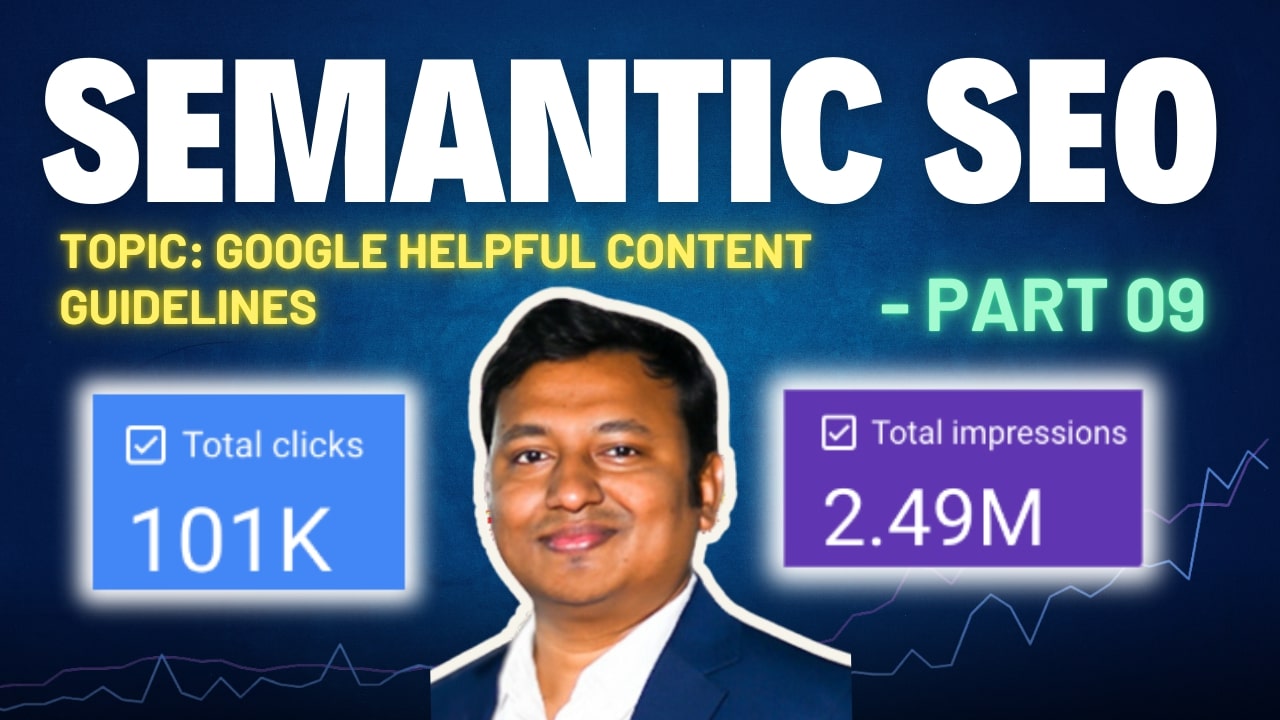With every Google core update, countless websites lose rankings—and in almost every case, it’s not because they lack keywords, backlinks, or even topical authority. It’s because they fail to meet the Helpful Content Guidelines.
Here, we’ll break down Google’s official guidance on creating people-first content—translated into a semantic SEO framework.
This is not just about writing well. It’s about structuring content semantically for meaning, depth, and relevance, while answering three essential questions:
- Who created the content?
- How was the content created?
- Why was the content created?
These questions are the foundation of EEAT (Experience, Expertise, Authoritativeness, Trustworthiness)—and they now define your content’s visibility in semantic search.
The Foundation: Google’s Helpful Content Signals
Let’s deconstruct the key ranking signals that Google emphasizes—and understand how they intersect with semantic SEO.
1. Original Research, Primary Data, and Exclusive Findings
Semantic SEO goes beyond repurposed information. Google expects:
- First-hand experience: Practical use of tools, testing, or case studies.
- Primary sources: Survey data, firsthand examples, screenshots.
- Unique insight: Fresh perspectives not available elsewhere.
Semantic implication: Entity uniqueness increases trust signals in the knowledge graph.
2. In-Depth Coverage: The Topical Depth Signal
A key principle of semantic content modeling is depth over breadth.
- Google rewards single, comprehensive documents over fragmented posts.
- Cover every entity, subtopic, fact, and variant.
- Remove superficial sections and go deeper into the “why”.
Semantic SEO Tip: Use topical maps to generate article outlines based on entity relationship trees.
3. Added Value: Don’t Just Rewrite—Contribute
Content must not only be unique—it must add new value to the discourse:
- New recommendations
- Expert commentary
- Updated statistics or methodology
- Advanced comparative analysis
Example: A product review must include hands-on usage, not just a spec sheet pulled from the brand’s site.
4. Source Attribution & External Validation
Semantic engines cross-reference source authority.
- Link to government reports, peer-reviewed journals, industry databases.
- Even unlinked citations (e.g. “according to WHO”) are semantically recognized.
- Use structured data like
author,citation, andreviewedBy.
Related Schema: ScholarlyArticle, MedicalWebPage, HowTo, FAQPage
5. Clarity in Titles and Meta Descriptions
Headlines and H1s are semantic signals.
Avoid:
- Clickbait (“X Will Shock You!”)
- Vague titles (“The Truth About SEO”)
Use:
- Specificity + Topic + Outcome
Example: “10 Proven SEO Strategies to Increase Organic Traffic in 2025”
Semantic SEO requires:
- Headings as entity indicators
- Meta descriptions that express query intent
ALSO READ …
- What is AEO (Answer Engine Optimization)
- How does Google rank articles
- What is semantic search
- What should you learn in Semantic SEO
- What is entity-based content
6. Demonstrated EEAT: Trust is an Entity Signal
Google now ranks based on who you are, not just what you say.
Build semantic trust via:
- Author bios with credentials (
Personmarkup) - Organization reputation (
Organization,sameAs) - External backlinks from topical hubs
Semantic SEO ≠ Content Optimization Only
It includes entity-level optimization of the author, publisher, and topical domain.
Common Pitfalls to Avoid (According to Google)
| Violation | Semantic Implication |
|---|---|
| ❌ Thin content | Lacks topical coverage, low entity count |
| ❌ Word count obsession | Misses intent satisfaction in early paragraphs |
| ❌ Trend-chasing irrelevance | Topic mismatch with core site identity |
| ❌ False promises | Breaks trust graph, triggers demotion |
| ❌ Date-stamping without update | Flags manipulation in freshness algorithms |
| ❌ Mass-produced content | No contextual depth, low EEAT |
These errors don’t just cause ranking loss—they can trigger site-wide suppression under Google’s site classifier systems.
Semantic SEO Application: Creating “Helpful Content” at Scale
Let’s build a semantic content model based on Google’s guide.
Step-by-Step:
- Map Your Topic:
- Use tools like Thruuu, InLinks, Surfer, or Google NLP to extract entities
- Build a Topical Map → Topics → Subtopics → Entity Clusters
- Build Your Content Brief:
- Include related search queries (autocomplete, PAA)
- Add primary + secondary entities
- Define angle (experience, comparison, expert POV)
- Write for People, Structure for Machines:
- Use semantic HTML (H1–H6, schema, breadcrumb)
- Include internal links across your content network
- Answer intent in the first 2 paragraphs, then expand semantically
- Tag for EEAT:
- Add
author,reviewedBy,publishermarkup - Include expertise-driven author bios and source attribution
- Add
Conclusion: Google’s Guidelines Are a Blueprint for Semantic SEO
What Google calls “Helpful Content” is exactly what Semantic SEO seeks to achieve:
- Entity-rich
- Context-aware
- Trust-driven
- Intent-aligned
Every content audit, brief, and optimization task should start by asking:
- Is this original?
- Does it add new value?
- Is the EEAT demonstrable?
- Does it answer the full intent?
- Is it written for the user, not just for rank?
❝ In Semantic SEO, “Content Quality” is not subjective—it’s a function of data depth, entity relevance, and user alignment. ❞
Coming in Part 10: What is AEO? Why Answer Engine Optimization is the Future of Semantic SEO
Disclaimer: This [embedded] video is recorded in Bengali Language. You can watch with auto-generated English Subtitle (CC) by YouTube. It may have some errors in words and spelling. We are not accountable for it.
